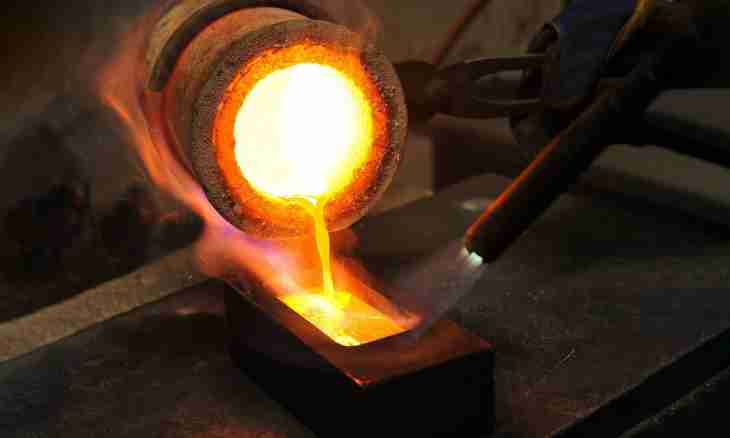The specific heat of melting is amount of heat which is required to one gram of substance to pass from a firm state into liquid. Different substances have the different specific heat of melting. For ice this rate is 335 kJ/kg, and for mercury - only 12 kJ/kg.
What is the specific heat of melting
The specific heat of melting call the amount of heat which is required for fusion of one gram of substance. The specific heat of melting is measured in joules on kilogram and pays off how private from division of amount of heat into mass of the melting substance.
The specific heat of melting for different substances
Various substances have the different specific heat of melting. Aluminum - metal of silvery color. It easily gives in to processing and is widely used in the equipment. Its specific heat of melting is 290 kJ/kg.
Iron - too metal, one of the most widespread on Earth. Iron finds broad application in the industry. Its specific heat of melting equals 277 kJ/kg. Gold - precious metal. It is used in jewelry, in stomatology and pharmacology. The specific heat of melting of gold is 66.2 kJ/kg. Silver and platinum - also precious metals. They are used in production of a jewelry, in the equipment and medicine. The specific heat of melting of platinum is 101 kJ/kg, and silver - 105 kJ/kg. Tin represents fusible metal of gray color. It is widely applied as a part of solders, to production of white tin and in production of bronze. The specific heat of melting of tin is 60.7 kJ/kg. Zinc - the metal of bluish-white color which is becoming covered on air by a thin film of chemically inert oxides. Zinc is used in processes of a refining, for protection of steel against corrosion, in production of chemical sources of current. The specific heat of melting of zinc - 112 kJ/kg. Mercury represents the mobile metal freezing at a temperature of-39 degrees. It is only of metals which in normal conditions exists in liquid state. Mercury is applied in metallurgy, medicine, the equipment, chemical industry. Its specific heat of melting is 12 kJ/kg. Ice represents a firm phase of water. Its specific heat of melting equals 335 kJ/kg. Naphthalene - the organic matter similar in chemical properties to benzene. It melts at 80 degrees and self-ignites at 525 degrees. Naphthalene is widely used in chemical industry, pharmaceutics, production of explosives and dyes. The specific heat of melting of naphthalene is 151 kJ/kg. Gases methane and propane are used as energy carriers and serve as raw materials in chemical industry. The specific heat of melting of methane is 59 kJ/kg, and propane - 79.9 kJ/kg.

